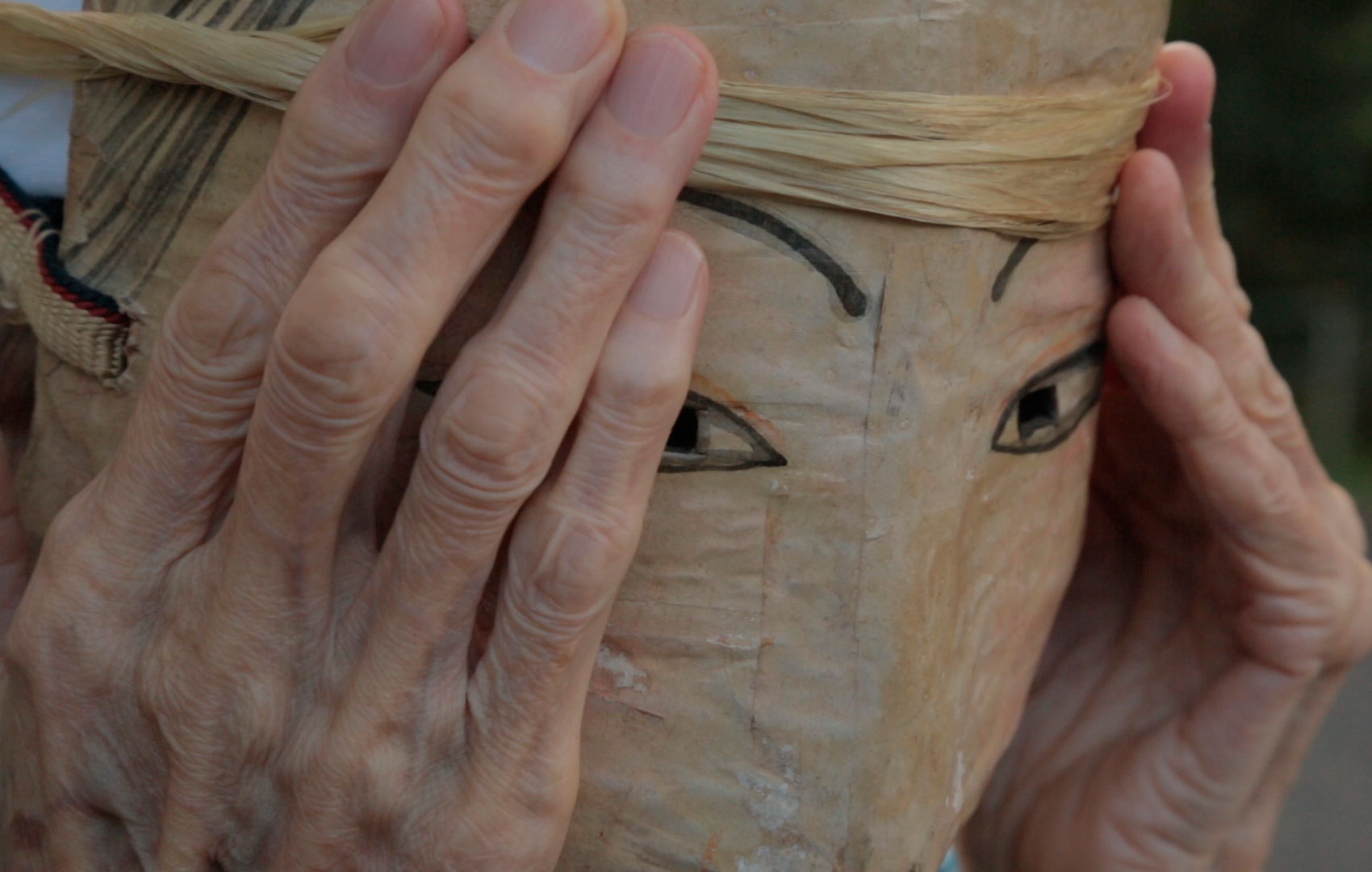Home / / Photo / Sculptures / Curatorial Projects / Bio / Contact
![]()

![]()

![]()

![]()
> stills and quotes
![]() > installation views
> installation views
![]() > publication
> publication
![]() > watch excerpts
> watch excerpts
![]()
![]()
the time is now.
two videos, HD, 19:50 and 28 min, 2019
A video installation composed of two films about the Japanese shamanic improvisation duo IRO (Toshio and Shizuko Orimo).
The couple have worked together since 1981. IRO’s music combines influences from punk, 1970s Free Jazz, ethnic music, ancient Shinto rituals, and indigenous ceremonies.
For Holzfeind’s film project the duo performed in various locations of the Inter-University Seminar House in the Tokyo suburb of Hachioji designed by Japanese architect and thinker Takamasa Yosizaka. Yosizaka’s ideas about the relationship between humans, nature and architecture, individuality and community, sustainability and peace, as well as his critique of Western civilization in many respects concur with the couple’s animist and pantheist weltanschauung. Their musical experimentation goes hand in hand with their activist involvement in the peace and anti-nuclear movement and a free-spirited way of life that vehemently rejects commercialism in all its forms.
The first film shows performances of the duo in various locations in the Seminar House. The unique modernist complex—whose main building has the shape of a pyramid turned upside down—was designed in 1964 by the Japanese architect and thinker Takamasa Yosizaka (1917–1980). Holzfeind stages Yosizaka’s extraordinary architecture as a set for IRO’s performances, which combine improvisation on Noh and stone flutes, fan drum, and kagura bells with their unique punk kagura version of ancient Shinto rituals, indigenous ceremonies, and Korean mask theater.
In steady takes and rhythmic cuts, Holzfeind’s film plays with the contrasts and interactions between the brutalist architecture, the surrounding nature, and the musicians’ performance and instruments. IRO’s invocation of traditions that interpret artistic performance as a kind of magic is mirrored by Holzfeind’s use of color filters and subtle color shifts that suggest a crossover into other realities. Like the recurring motif of the eye, the tinted shots refer to the film Phantom by Japanese experimental filmmaker Toshio Matsumoto (1932–2017). The soundtrack interweaves the instrumental sounds with Shizuko’s chants and the sounds of nature and civilization. At times, it feels like the cicadas and crickets are in dialogue with IRO’s instruments.
The film’s second part takes the viewer inside the Central Seminar Hall, where Shizuko and Toshio perform an improvisation for piano and contrabass with free-form vocals based on their “anima animus” and “Maburi Henoko” motifs. “Maburi Henoko” is a “kotodama” or “word-spirit” coined by the Orimos that plays on the animist concept of “maburi” (a word originating in the Amami Islands that means “soul” or “spirit”) and emblematizes their call for an end to the destruction of human and natural habitats caused by the construction of a US air base in Okinawa’s Henoko Bay. Holzfeind juxtaposes the concert with found footage of the “Izaiho” women’s ritual in Okinawa, protest movements in Tokyo and Okinawa between the 1970s and the present, and a video recording of a concert by IRO in 1987. It was their last performance as the punk-rock duo IRO and marks a radical change in their musical practice: shaken by the Chernobyl disaster, they decided to exclude electronic sounds from their performances altogether, using only acoustic instruments and focusing on indigenous traditions and Shinto rites to make what has been described as “energy-free music.” The visual juxtapositions and acoustic superimpositions of the concert recordings from the 1980s and the fall of 2018 yield a synthetic impression of their artistic collaboration and experimentation, which spans more than four decades.
The second film paints a poetic portrait of the couple that offers glimpses into their personal universe: their musical roots in ethnic music, punk, and 1970s free jazz, their philosophical influences and reflections, their sustainable lifestyle, and their political commitments. The film captures the fragility of their relationship and emphasizes how major decisions shaping their lives were time and again bound up with political events. “What we do is ultimately futile. But the reason we continue is not to change the world, but so we won’t be changed by the world,” they say, paraphrasing Gandhi: “We don’t want to be controlled. We want to be free.”
In conjunction with the exhibition the vinyl record “anima animus” is released. It features new tracks by IRO recorded at the Seminar House and a booklet with Holzfeind’s photographs and interviews with the musicians and the architect Yuko Saito, a former associate at Takamasa Yosizaka’s studio (Atelier U), about his work and ideas.
![]()
-